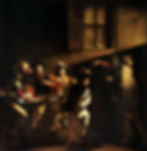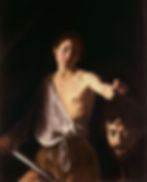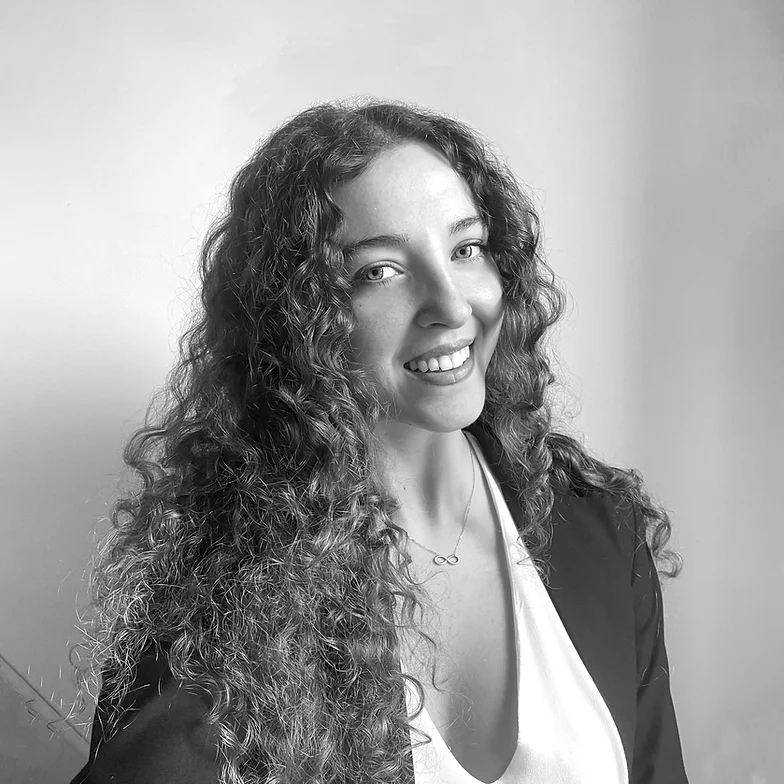Caravaggio: Genius, Provoker, Murderer and the Master
- Pelin Burcu Ozturk
- Mar 9, 2022
- 8 min read
Updated: Apr 4, 2022
Michelangelo Merisi da Caravaggio was simply known as Caravaggio. He was born in Milan in the late 16th century and grew up in Caravaggio, east of Milan. He was only six years old when his father and grandfather died of the plague on the same day. He would lose his mother in the following years and would become an apprentice of Simone Peterzano (Biography.com Editors, 2019).

Peterzano was a pupil of Tiziano Vicielli, known as Titian. Titian is an adjective for a very warm, sparkling reddish brown-orange color, a blend of red and gold that took the name from its most skilled user (“Titian Definition and Meaning,” n.d.-b). Titian himself was famous for the use of rare pigments in their richest and most saturated form as well as carefully balancing each color with accompanying colors to create an ultimate harmony. He also focused on the effect of light on color, using lighting effects including chiaroscuro to accentuate contrasting hues. His loose brush strokes and expressive application of paint made him known as the master of color (Titian, n.d.). He built up layers of glazes to express the appearance and texture of human form accurately, delicately, and softly. The Venetian Renaissance painter became famous for his appealing rendering of the human form. He used his fingers along with brushes to apply and blend paint which gave a greater movement and created a unique fluidity (Breda, 2018). He defined the Venetian Renaissance style while influencing later innovators of Baroque (Biography.com Editors, 2014).
Simone Peterzano, mostly known as Caravaggio's teacher, was a disciple of Titian in Venice (as can be seen from the autograph he placed in his paintings). Simone Peterzano is one of the representatives of the late Lombard Mannerism, also known as the Late Renaissance whose compositions are asymmetrical or unnaturally elegant. It was torn by plague and the destruction of Rome and was largely replaced by the Baroque style. The well implied bright color is distinguished in Peterzano’s early paintings where his Venetian training shines, while his latest work is characterized by a cold and ascetic monument (Calvesi, 1954).
Caravaggio was an apprentice of Simone Peterzano for four years where he learned the basics like preparing canvases, mixing paints, perspective, proportion, and so on. He, supposedly, developed a “nature morte” (still life) painting technique while studying under Peterzano and he absorbed the contemplative atmosphere of Leonardo da Vinci and renowned Northern Italian painters like Giorgione and Titian (Codazzi, 2020). Caravaggio was fascinated by patterns in nature and bright colors. Leonardo da Vinci‘s “The Annunciation” is full of nature and beautiful details such as the angel holding flowers: some flowers are closed while some of them open in a correct form as in nature. Caravaggio studied body language, use of light, reflection, shadows, the human body along with nature itself. It can be said that Caravaggio’s biggest inspiration was his surroundings in Lombardy and the great masters of the Renaissance period (Robb, 2000).

In his earlier years, the simplicity and attention to naturalistic details can be seen, yet his style exhibits a uniqueness in expressing the whole truth. For example, "Basket of Fruit" shows the passage of time. The fruits are rotting and the leaves are dying. There is no idealization of a concept or a selection of the beautiful part of reality. Rather, it shows the world as it is, not what it should be. There are also ways in which his particular form of subjectivity tends to emphasize the painful and unpleasant aspects of life. His compact work is full of threats, temptations, and ambiguities. Notable works of this period include "The Boy Peeling Fruits" (his earliest known painting), "The Boy with a Basket of Fruit", and "The Young Sick Bacchus" (a supposed self-portrait). Especially, “The Boy with a Basket of Fruit” steps forward with its originality: a handsome street boy posing well, tilting his head slightly, lowering his shirt from one shoulder, and gently pressing his basket against his body. Contrary to the Renaissance period, the personage is an ordinary person while the main character in the painting is not even this boy but the vibrant fruits in the basket. Fruits are one of the most well-known reminiscent in the biblical stories, particularly the apple that symbolized the first sin of human history. In this sense, fruits evoke the emotions of temptation and fertility (Jackson, 2019). Moreover, the artist skillfully depicts not only the smooth color of the fresh peaches and apples but also the dark spots on the dried fruit and leaves. There is irregularity and imperfection in the basket’s figures like how it is in nature itself. Although, there is great attention to details along with the color and lights.

Caravaggio went to Rome in the 1950s after an incident in Milan where he wounded a police officer. At the time, there was a huge demand from Rome for paintings to fill the many great new churches and palaces under construction. This was also a period when the Church was looking for a stylistic alternative to Mannerism in religious art, which was tasked with countering the Protestant threat. Caravaggio's innovation was a radical naturalism that combined close physical observation with the dramatic and even theatrical use of chiaroscuro, which became known as tenebrism (the transition from light to dark). He built up a remarkable reputation with several large commissions in Rome during his 14 years stay (Stechow, 1956).
Caravaggio's paintings on religious themes harken back to realism and the emergence of remarkable spirituality. The first of these is "Penitent Magdalen", which shows Mary Magdalene sitting on the ground next to her broken jewelry. The luxurious jewelry seemed to have been cast off as if she no longer wanted them. It is followed by "Saint Catherine", "Martha and Mary Magdalene", "Judith Beheading Holofernes", "Sacrifice of Isaac", "Saint Francis of Assisi in Ecstasy" and "Rest on the Flight into Egypt". The common point of these paintings is the pause. Caravaggio is fascinated by the moment. He creates a very theatrical scene by zooming in to make the audience involved. He provides abstract and ambiguous settings, generally against dark backgrounds, while building scenes full of real textures, fabrics, and expressions (Friedlander, 1955). Caravaggio is interested in what is happening in the moment, not the end result which is the reason why the figures are half-length. He preferred the Venetian practice of working in oils directly from a subject because what matters is the subject and the expression of emotion. His paintings are far away from the idealization of form while the figures have naturalistic poses with all flaws and detect. He reached the top of his fame by decorating the Contarelli Chapel in the church of San Luigi dei Francesi. "The Martyrdom of Saint Matthew" and "The Calling of Saint Matthew", delivered in 1600, caused an immediate sensation that he was never short of commissions or patrons (Robb, 2000).

Caravaggio's tenebrism brought high drama to his subjects while his penetrating realism brought a new level of emotional intensity. His paintings evoke dramatic feelings like horror, anger, and fear; he often relied on a single light source, generally from the left side, to reveal contrasting regions of harsh light and complete shadow in the intensely expressive faces which he painted (Fox et al., 2004). He tends to highlight the unpleasant aspects of life where his compact oeuvre is filled with menace, charm, and ambiguity. He makes the viewer a witness while including himself in part of this bitter human reality. Caravaggio painted himself numerous times - “David with the Head of Goliath'' which is an extremely theatrical and dramatic work. It can be seen that Goliath, who is represented by Caravaggio's face, has just been killed, the blood is still dripping, one of his eyes seems dead while the life spark is fading from the other eye. In “The Taking of Christ'', he is on the far right of the painting and holding a light. In "The Martyrdom of St. Matthew" he stands as a witness in the corner looking at the scene, while in "Judith Beheading Holofernes" he is in the middle of the scene by being the one whose head is cutting off. He captured the moment of decapitation with light from the side that marks Judith’s determination along with Holofernes’ scream. He has several more self-portraits in which he portrayed himself in sacred subjects as well as an observer (Caravaggio’s Self Portraits, 2018).

As Caravaggio’s success grew, so did the artist's agitation. He was a man who enjoyed drinking and gambling and could be a violent, temperamental man. An observer described him as “a person who is ever ready to engage in a fight or an argument." (Caravaggio, 2019). Throughout his career, he would encounter the criminal justice system, many historians know him more from his police record than from his paintings. The artist dressed all in black and wandered the streets carrying a sword. He killed a man in 1606 during an argument over a tennis match, while others claim the reason for the fight was an unpaid debt, which resulted in his exile from Rome. His career was split between Naples, Malta, and Sicily after fleeing Rome. He was pardoned by the Pope three days before his death; however, he was mistakenly captured by Spanish soldiers on his way back home. He was later released by taking off all his belongings; however, he died on the beach, near Tuscany, of illness at the age of 39 (Stechow, 1956).
Caravaggio produced 88 paintings during his relatively short life thanks to his observational technique. His paintings were generally large scale and he preferred to paint directly to the canvases without sketches or drawings. He got inspired by Lombardy’s landscape, old masters, and art movements. He emphasized the poverty and common humanity of Christ and his disciples, apostles, saints, and martyrs, by ragging their clothes and dirty feet. He used live models and sculptures for his paintings and he was famous for working in furiously for long hours. Caravaggio was not the first one who was using chiaroscuro but he was the one that made it the dominant style by darkening shadows and placing the subject under a strong light from one side. With this, his keen observation of physical and psychological realities laid the groundwork for both his immense popularity and his frequent troubles with his religious commissions (Graham-Dixon, 2011). He refused the idealization of forms and he painted life as it was. The physical and physiological drama of his chiaroscuro inspired Baroque artists but, they didn't take the psychological realism of Caravaggio’s paintings. He never established a workshop or had an apprentice yet, he influenced lots of artists that resulted with stylist followers called the “Caravaggisti” or the "Caravagesques". He had a great influence on following artistic periods while in time, his paintings and the style he developed were accepted as “the beginning of the modern painting” (Berne-Joffroy, 2000).
References
Berne-Joffroy, A. (2000). Le dossier Caravage (French edition). Flammarion.
Biography.com Editors. (2019, September 13). “Caravaggio Biography.” The Biography.Com Website, A&E Television Networks, Retrieved from https://www.biography.com/artist/caravaggio
Biography.com Editors. (2014, April 2). “Titian Biography.” The Biography.Com Website, A&E Television Networks, Retrieved from https://www.biography.com/artist/titian
Breda, P. (2018, Jun 20). Titian Artist Overview and Analysis. TheArtStory.org.
Retrieved February 24, 2022, from https://www.theartstory.org/artist/titian/
Calvesi, M. (1954). Simone Peterzano: Maestro del Caravaggio. In Bollettino d’Arte (4th ed., pp. 114–133). Ministero dei beni e delle attività culturali e del turismo.
Caravaggio’s Self Portraits. (2018, May 24). Medium. Retrieved February 22, 2022, from https://medium.com/@efrain/caravaggio-s-self-portraits-d7244a6b2989
Codazzi, A. (2020, March 14). Tiziano e Caravaggio in Peterzano. lemeravigliedellarte.it. Retrieved February 20, 2022, from https://www.lemeravigliedellarte.it/recensioni/detail/tiziano_e_caravaggio_in_peterzano
Fox, S. E., McKeeff, T. J., & Tong, F. (2004). A perceptual basis for the lighting of Caravaggio’s faces (Vol. 4). Journal of Vision August. https://doi.org/10.1167/4.8.215
Friedlander, W. (1955). Caravaggio’s Character and Religion (chapter 6 in Caravaggio Studies ed., Vol. 38). The Art Bulletin.
Graham-Dixon, A. (2011). Caravaggio: A Life Sacred and Profane. Penguin Books.
Jackson, K. (2019, June 20). Symbolism of Fruit in Caravaggio’s Boy with a Basket. artdependence.com. Retrieved February 21, 2022, from https://artdependence.com/articles/symbolism-of-fruit-in-caravaggio-s-boy-with-a-basket/
Robb, Peter. (2000). The Man who Became Caravaggio. New York : Henry Holt.
Stechow, W. (1956). [Review of Caravaggio Studies, by W. Friedlaender]. The Art Bulletin, 38(1), 58–63. https://doi.org/10.2307/3047637
Titian. (n.d.). Italian Renaissance Art.Com. Retrieved February 20, 2022, from https://www.italian-renaissance-art.com/Titian.html
Titian definition and meaning. (n.d.). In Collins Dictionaries. Retrieved February 22, 2022, from https://www.collinsdictionary.com/dictionary/english/titian
Image Sources
Image 1: Caravaggio. (1593). Young Sick Bacchus [Painting]. Galleria Borghese. https://galleriaborghese.beniculturali.it/opere/autoritratto-in-veste-di-bacco-bacchino-malato/
Image 2: da Vinci, L. (1472). The Annunciation [Painting]. Le Galleri Degli Uffizzi. https://www.uffizi.it/en/artworks/annunciation
Image 3: Caravaggio. (1593). Boy with a Basket of Fruit [Painting]. Galleria Borghese. https://borghese.gallery/collection/paintings/boy-with-a-basket-of-fruit.html
Image 4: Caravaggio. (1599–1600). The Calling of Saint Matthew [Painting]. Web Gallery of Art. https://www.wga.hu/frames-e.html?/html/c/caravagg/04/23conta.html
Image 5: Caravaggio. (1610). David with the Head of Goliath [Painting]. Galleria Borghese. https://borghese.gallery/collection/paintings/david-with-the-head-of-goliath.html






